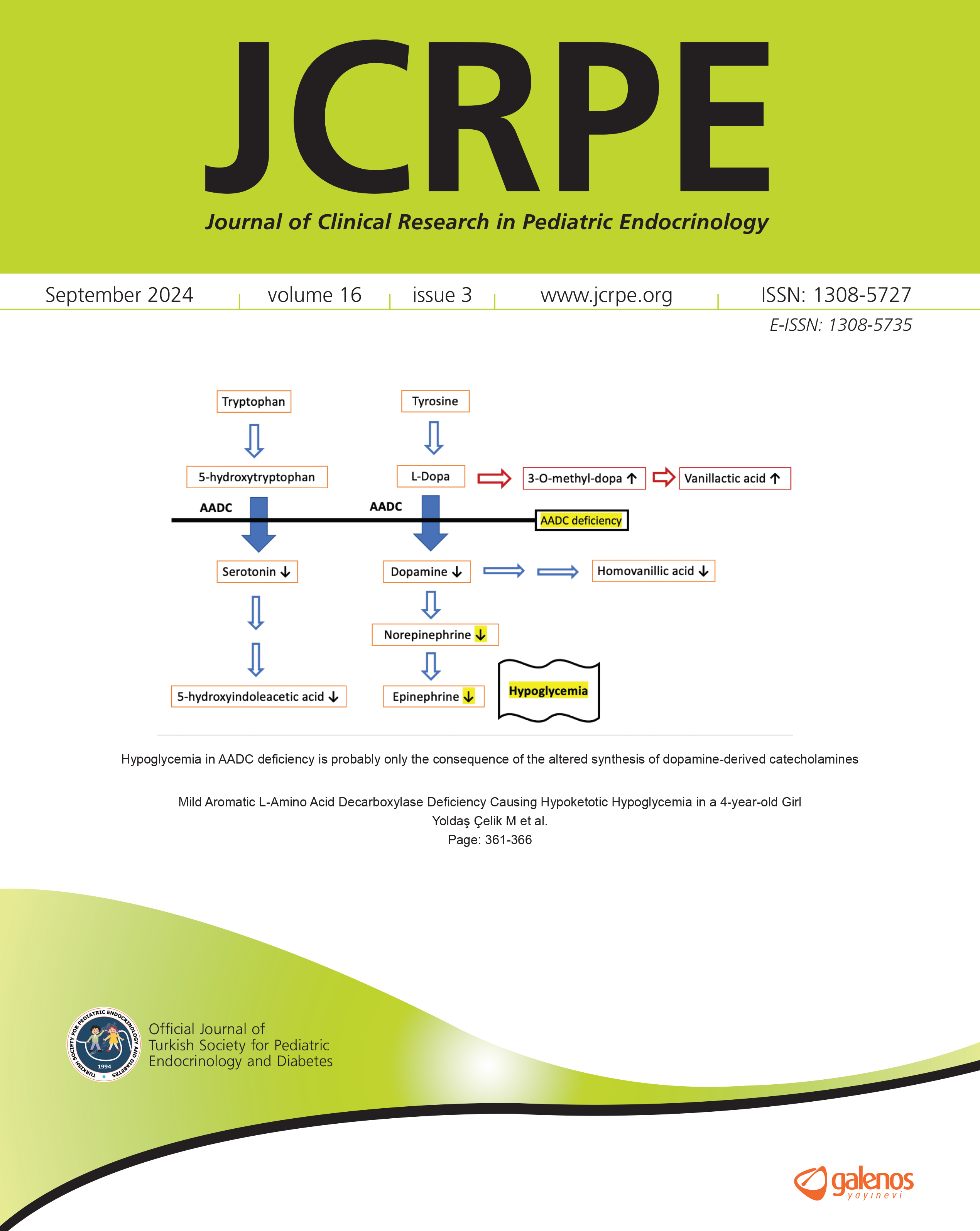Schwartz-Jampel Syndrome Type-1: Compound Heterozygosity of Two Novel Variants
Fatma Güliz Atmaca1, Özlem Akgün Doğan2, Büşra Kutlubay3, Heves Kırmızıbekmez11University of Health Sciences Umraniye Training and Research Hospital, Pediatric Endocrinology, İstanbul, Turkey2University of Health Sciences Umraniye Training and Research Hospital, Pediatric Genetics, İstanbul, Turkey
3University of Health Sciences Umraniye Training and Research Hospital, Pediatric Neurology, İstanbul, Turkey
Schwartz-Jampel Syndrome (SJS) type-1 (OMIM; #255800), a rare cause of skeletal dysplasia, is characterized by myotonic myopathy, chondrodystrophy, short stature, facial and eye abnormalities. SJS Type-1 develops due to variations in the HSPG2 gene which produces the "perlecan" molecule, one of the main proteoglycans of the basement membrane. A 6-year-old girl presented with short stature, a mask face, shrunken lips, narrow palpebral opening due to blepharospasm, stiffness of facial muscles, micrognathia, overlapping teeth, a short neck, and a bell-shaped thorax due to myotonic myopathy. She was diagnosed with SJS type-1 due to compound heterozygosity of two novel variations in the HSPG2 gene. In patients with short stature and an accompanying myotonic myopathy SJS should be considered. Compound heterozygosity may cause typical clinical findings of SJS. In case of suspicion creatinine kinase levels can be measured, and the determination of myotonia may require evaluation with electromyography. Once the diagnosis is made, patients should be carefully monitored in terms of growth, neuromuscular disorders, joints problems and bone health.
Keywords: HSPG2 gene, Myotonia, Short stature, skeletal dysplasiaManuscript Language: English



























